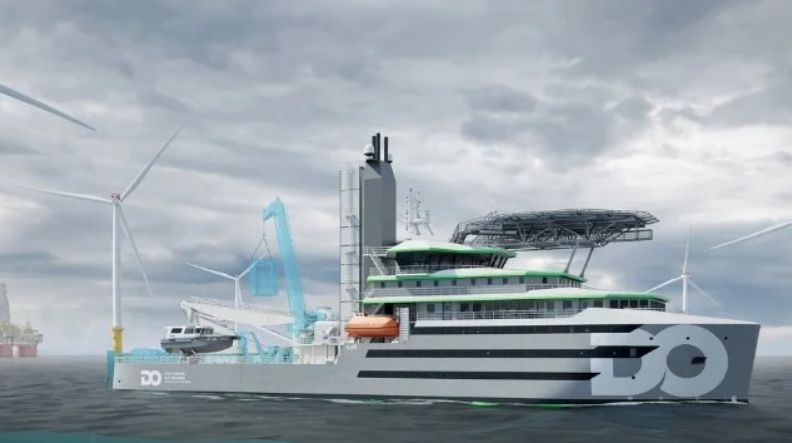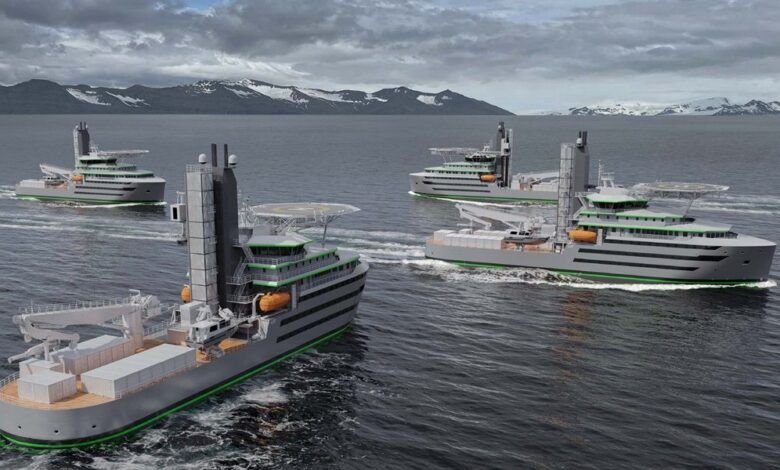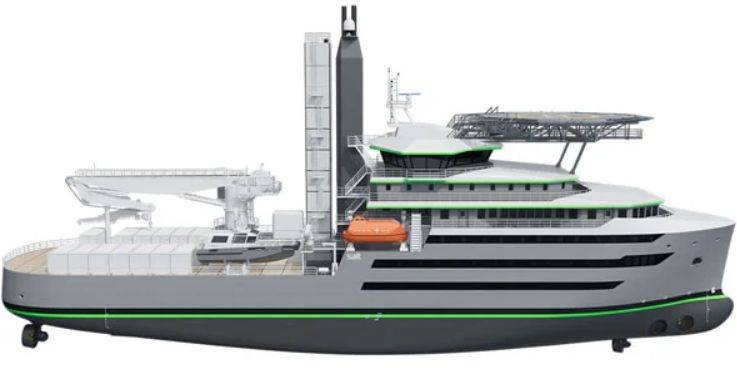
There is a strong need for more offshore vessels according to the joint venture launched a year ago by Schoeller Holdings and Deutsche Offshore Schiffahrt. The companies announced the order of four special-purpose vessels, construction commissioning service operation vessels (C-CSOV) which they believe will fill the need with a more versatile and capable design.
The partners highlight that the global energy market is currently experiencing high demand for support ships. They point to the large number of ships that will be needed to support the already approved offshore projects in Europe as well as the emergence of the sector in Japan, Taiwan, and other countries.
Four of the new concept vessels have been ordered for construction by China’s CSSC Huangpu Wenchong Shipbuilding. Delivery is due to begin in early 2027. Columbia Shipmanagement will provide the technical services and the four ships will be available for charter both in the offshore wind and offshore energy markets.
“The energy market is desperate for new players and more ships. We will charter out the C-CSOVs worldwide, both on the spot market and for long-term contracts of up to 15 years,” said Philipp Maracke, Managing Partner of Deutsche Offshore Schifffahrt. Maracke founded the company together with Johannes Wolters, who acts also as managing partner.
According to the company, the C-CSOV represents a major innovation in the offshore shipping market. The current ships in the sector are being designed exclusively for work supporting offshore wind turbines, but their design is more flexible and suited to broader applications. The company says it will be possible to deploy the vessels in the offshore wind sector as well as supporting grid operators, and companies in the oil and gas sector. They will be suitable to perform work above and below the water.
The ship will be 96.25 meters in length with a 20-meter beam and have accommodations for up to 100 technicians. The design optimizes hydrodynamics and uses energy-efficient propulsion and energy systems. They plan a 1,000 kWh battery pack and shore power connections and the design is ready for methanol fuel adding the necessary tanks and pipelines to earn a methanol-ready designation. The energy system is also designed to enable the ship to operate entirely on electricity in the future.
Among the other features they highlight is an enlarged and fully modular working deck, providing over 850 square meters of unobstructed multipurpose space. When used in conjunction with a 50-tonne AHC crane featuring integrated 3D motion compensation, the special-purpose vessel will be able to perform not only conventional Offshore Wind tasks but also cable repairs, IMR, and light construction work both above and below water.
The fully integrated offshore gangway system will provide access to platforms between 12 and 30 meters above the waterline. A lift will allow technicians and the necessary material to be transported to the offshore facilities quickly and without steps. A 12.4-tonne helicopter deck will satisfy the offshore industry’s requirements for these kinds of special-purpose vessels. The ship has also been designed for the use of remotely operated vehicles (ROVs). They also point to an ability to equip the vessels with modular cable repair spreads making it possible to offer repairs to critical cable infrastructure.
The ship design was jointly developed by Deutsche Offshore Schifffahrt and the Norwegian company Salt Ship Design. They believe the modified design and the added modularity will meet the needs of the broader market without compromising capabilities.



We use cookies to improve your experience. By continuing to use our site, you accept our Cookies, Privacy Policy,Terms and Conditions. Close X